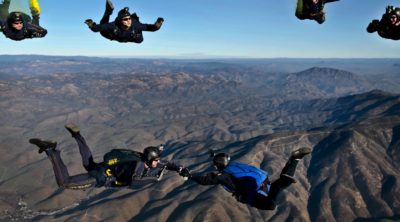
The name that comes to mind whenever Tour de France is mentioned, is none other than its Lance Armstrong and vice versa. The most popularly followed and wholeheartedly worshiped bicycle race across the world is definitely more than a brief introduction. Ride on.
The Tour de France is the most famous bicycle race in the world, which gained immense popularity due to American Lance Armstrong, who almost single-handedly brought the race to world attention. He set a benchmark consecutively winning the most number of times (seven) from 1999 to 2005, before being tested positive for a banned substance and being stripped of all the medals in 2012. It is a race that covers more than 3,500 kilometers, and attracts cyclists from all over the world. There are similar races held in Italy and Spain too, but this one stands out, being the oldest and most well-known. But what exactly is this phenomenon and why is it so popular?
The Grand History
Tour de France is an annual bicycle race that covers the regions throughout France and bordering countries like Luxembourg, Italy, Germany, Spain, Netherlands, Switzerland, Ireland, Belgium, and Great Britain. The race always ends in Paris, irrespective of where it started from. The starting point of the race is changed almost every year. The race is broken into day-long sessions called stages. The rider who takes the least time to cover all the stages is declared the winner. This 23-day long competition attracts sports and media persons from all over the world.
An interesting fact is that it is possible to win the race even if a cyclist does not win any of the stages, as Greg LeMond did in 1990. The number of stages and the distance to be covered in the race varies. The modern version, however, has 21 stages. It’s a 23-day affair, with two rest days which are required for traveling and transporting riders and their material between the stages.
The shortest race, which was 2,420 kilometers long, was held in 1904; while the longest was held in the year 1926, and was 5745 kilometers long. The race has always ended with a flat stage at Champs-Élysées, since 1975. The prize money has increased since 1903, in which year only 20,000 francs was given to the winner. The prizes are now given daily and for the final placings too. In 2013, the winner received a prize money of USD 591,075$, which does not include the stage bonuses and other incentives.
Early History and Rules
When the race began in 1903, the riders could ride at night. But in 1904, night riding was dropped, because the riders could cheat in the night, as the judges could not see them. A series of doping scandals in the 1960s led the Union Cycliste Internationale, a cycling sport association which looks after all the international cycling events, to reduce the daily and overall distances and provide rest days in-between stages. An important tradition of the race is that riders wear distinctive jerseys to signify their level of achievement in the race.
It’s All About The Jerseys!
- Yellow Jersey: Known as maillot jaune in French, the jersey is worn by the overall race leader. The yellow jerseys were awarded from 1919 onwards.
- Green Jersey: Known as maillot vert in French, these jerseys are awarded for sprint points. The points for flat stages are higher. There are five types of stages; flat, intermediate, mountain, individual time trial, and team trial stages.
- White Jersey with Red Dots: Known as maillot à pois rouges in French, the jersey is worn by the rider who tops the mountain stages. The winner of this stage is called the ‘King of the Mountains’.
- White Jersey: Known as maillot blanc in French, the jersey is given to the rider under 25 on January 1 that year.
The race is very important in France as well as the whole of Europe. People line over the roads to get the best view. The Tour de France speaks for national unity, and is truly a prestigious event in the world of sports. The 2014 race will begin on 5th of July. It will be a 21-stage race . So prepare yourself for the ultimate excitement beforehand, and enjoy the greatness of the Tour de France.
